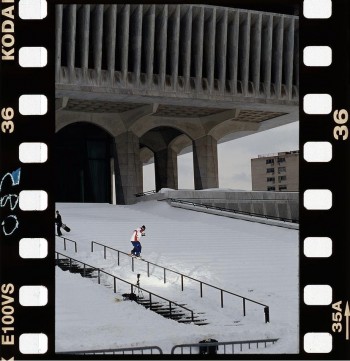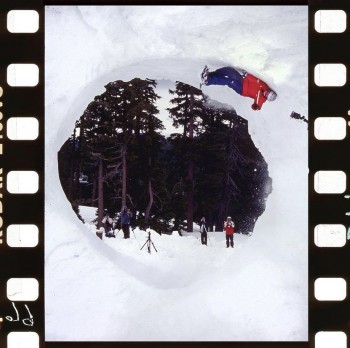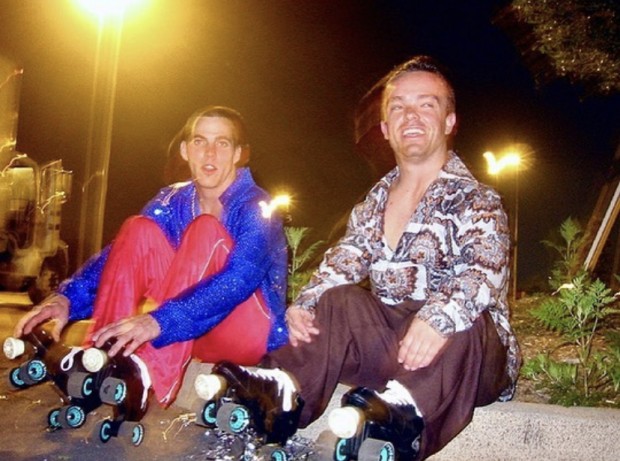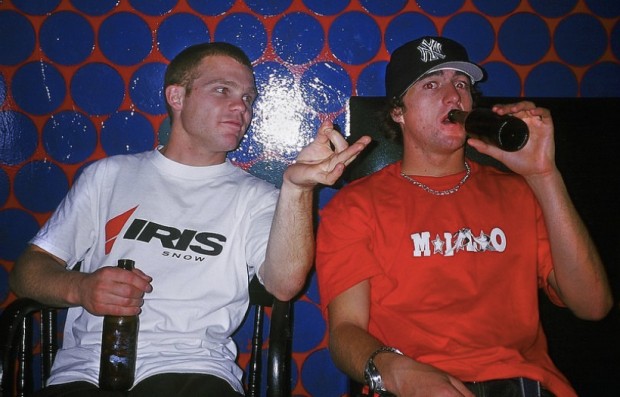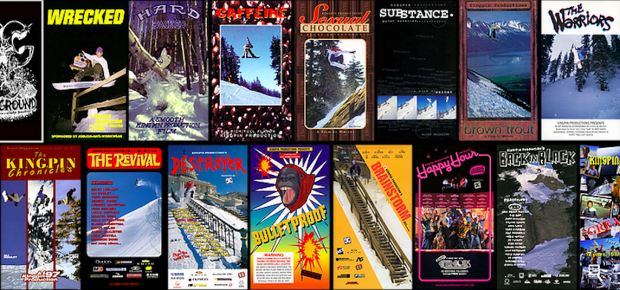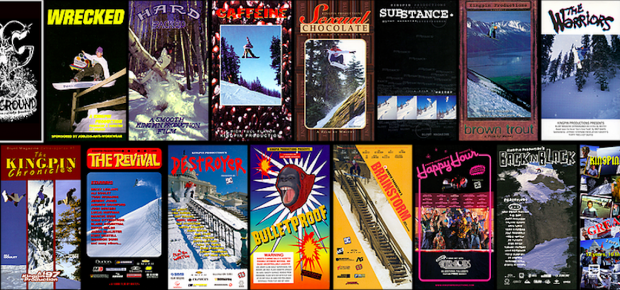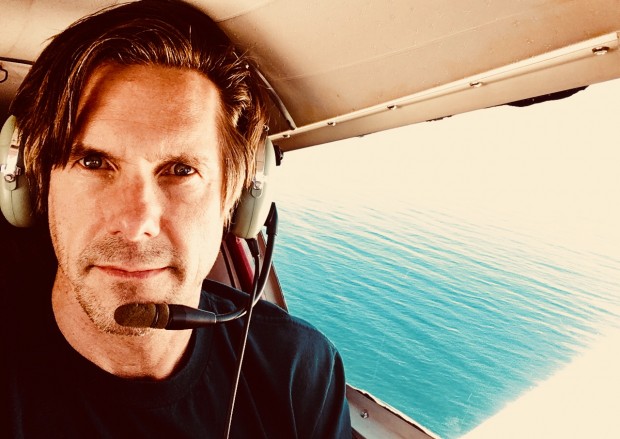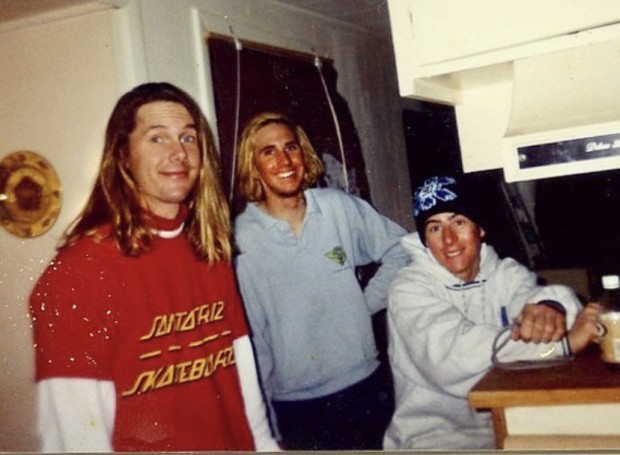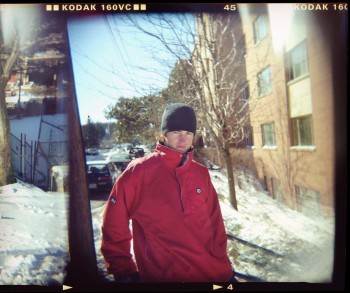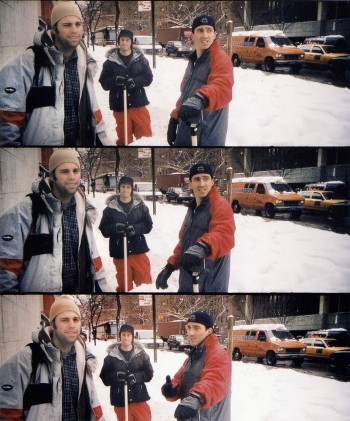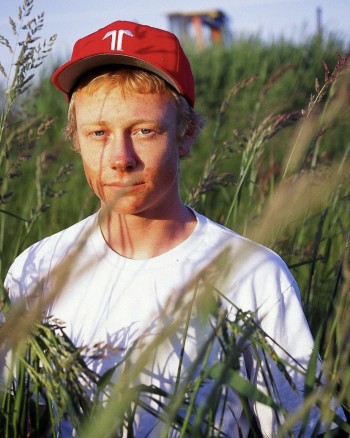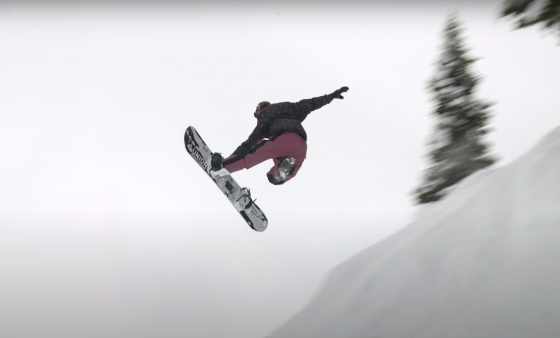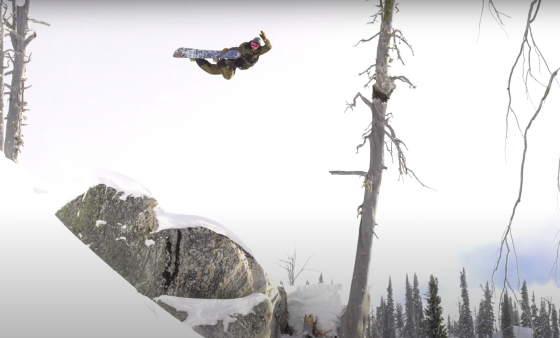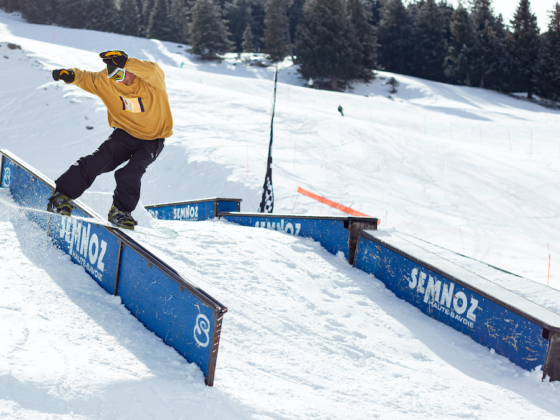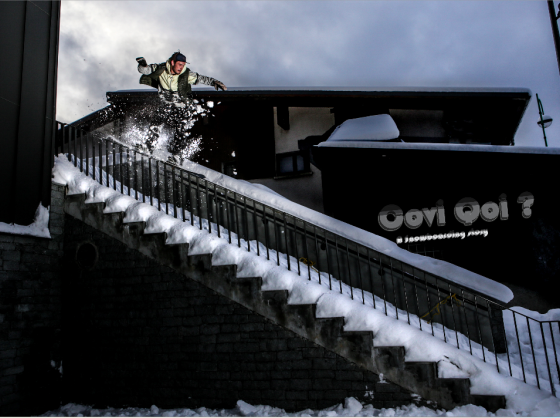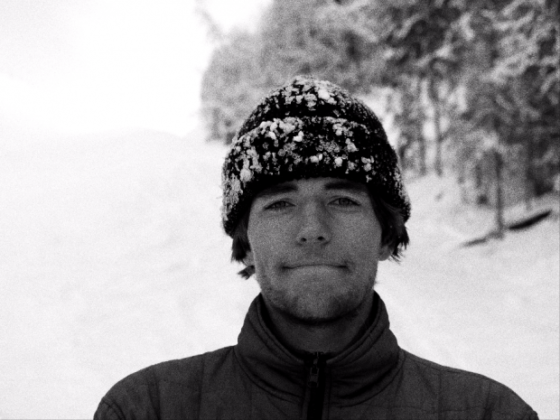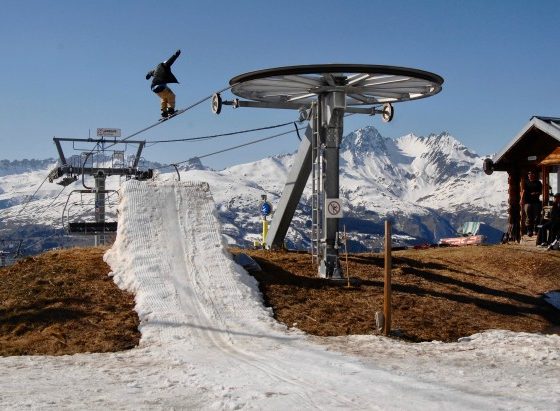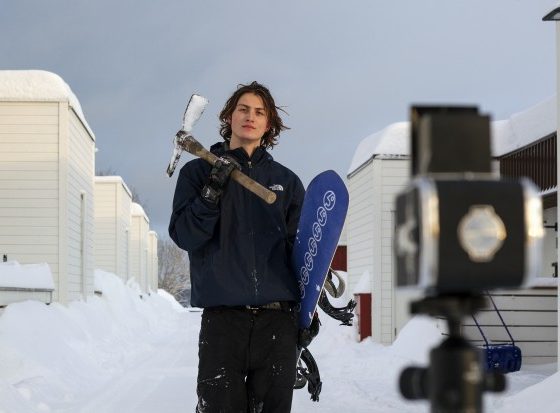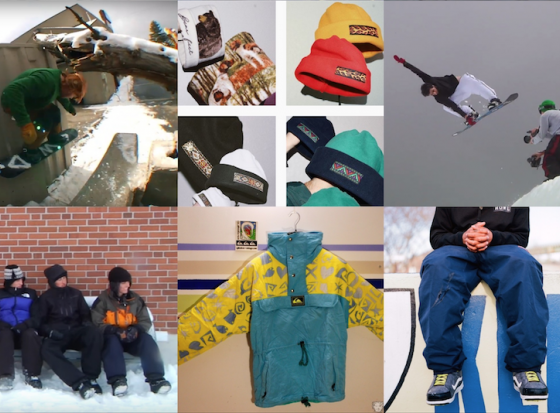Si vous vous intéressiez déjà au snowboard dans les années 90 et début 2000, il y a de grandes chances que le nom de Kingpin Productions vous évoque de bons souvenirs sur VHS. En effet de 1994 à 2004, Kinpin a sorti 17 films ! The Warriors, The Revival, Destroyer ou Back In Black, des vidéos qui ont marqué l’histoire du snowboard et révélé un paquet de grands riders. L’homme derrière cette production s’appelle Whitey McConnaughy et en plus de ça, il a fait un paquet d’autres bonnes choses dans sa carrière comme collaborer avec le meilleur magazine de snowboard de tous les temps qui s’appelait Blunt, réalisé des clips pour des groupes de rock prestigieux, des pubs TV et à même terminé à Hollywood avec l’équipe de Jackass. Whitey poste régulièrement de belles pépites de l’histoire du snowboard sur son compte Instagram et vient aussi de ressortir la mythique vidéo The Revival en version remasterisée. Vous pouvez suivre son travail sur ses sites www.kingpinproductions.tv et whiteyfilms.com. On est ravis qu’il nous ait accordé une interview qui parle de l’âge d’or du snowboard et fera plaisir aux passionnés !
Toutes les photos sont la propriété de © Whitey McConnaughy
Quand as-tu commencé Kingpin Productions ?
J’ai lancé Kingpin en 1992 quand j’avais 22 ans et ça s’est fait un peu par hasard. Je viens de Washington DC et j’ai grandi en faisant du skate. J’ai eu une planche en bois Burton Backhill à 14 ans que je ridais dès qu’il neigeait. Je mettais des Vans montantes et des pantalons camo bien punk. Ils n’ont pas autorisé le snowboard dans les stations sur la côte est jusqu’à mes 18 ans, à l’époque où j’étais à la fac. Mais dès que l’on a pu faire du snowboard en station, on n’a plus jamais voulu skier. Après la fac, j’ai déménagé à l’ouest avec un pote vers San Diego. J’ai rapidement rencontré un crew de skateur de piscine là-bas. Mon objectif était de m’installer dans le Colorado en décembre afin de devenir un pro snowboarder. Mais quelques mois avant de bouger dans le Colorado, je me suis cassé la cheville en skatant une piscine et j’ai eu droit à 9 vis et une plaque. Je suis quand même allé dans le Colorado avec Stevie Alters et un pote de Washington. Stevie avait 18 ou 19 ans et il était sponsorisé en flow par un représentant Burton local mais il déchirait. Il était bien meilleur que les vieux pros de l’époque et meilleur que tous les autres riders que j’avais vu. J’ai rapidement rencontré pas mal de nouveaux arrivants à Breckenridge comme Jason Gerardi aka J1, J2, Nate Cole, Chris Todd Fransen, Dave England, Cody Dresser… J’ai vite compris que les vis et la plaque dans ma cheville me faisait trop mal quand je voulais rider à fond donc j’ai vite abandonné mes rêves de pro rider. Et je savais au fond de moi que mes nouveaux amis étaient bien meilleurs que moi.
Comment était-ce à l’époque de filmer une vidéo de snowboard ?
Je me souviens avoir vu le teaser d’une nouvelle vidéo de snow et trouver que ça avait l’air vraiment nul et que ça ressemblait à un mauvais film de ski. Je me suis dit que je pouvais faire mieux que ça et j’ai décidé de le faire. Je n’avais pas d’argent, pas de plan mais j’avais une caméra et j’ai commencé à filmer mes potes. Le nom Kingpin vient de la pièce sur un truck de skate qui porte le même nom. A l’époque le snowboard était tellement nouveau et frais. Tout le monde essayait d’innover et tout était à créer. Les gens étaient créatifs, ils coupaient et modifiaient leur board et leur fixs. Cette nouvelle génération avait de l’avance sur l’industrie en terme de design et de style. Ils n’ont pas seulement changé la façon de rider des gens mais aussi le shape et la fabrication des snowboards. Je ne dirais jamais au combien des gars comme Roan Rogers, Nate Cole, Steve Alters ou Dale Rehberg ont changé le snowboard.
Kingpin est la production qui a offert leurs premières parts à des futures superstars comme JP Walker, Jeremy Jones, Ingemar Backman, Scotty Wittlake, Iikka Backstrom ou Gigi Ruf. Comment as-tu découvert ces nouveaux talents.
Je pense que ce qui nous permis de découvrir tant de riders talentueux ce que nous avions envie de les filmer. Les autres grosses productions de l’époque comme Fall Line, Mack Dawg ou Standard filmaient principalement les gros noms du moment et je filmais les rookies. J’ai toujours préféré filmer des riders que j’aimais personnellement et que je trouvais intéressants. Tout le monde était pote dans notre crew et je pense que c’est ce qui distingue Kingpin de beaucoup d’autres productions. Il n’y a jamais eu de tensions ou d’individualisme dans notre équipe. Et c’est vrai qu’on a lancé la carrière de pas mal de pros comme Stevie Alters, J2, Ninja Jay Isaacs, Ingemar Backman, Mikey Leblanc, Cody Dresser. Kurt and Jeff Wastell, JP Walker, Gigi Ruf, Scotty Wittlake, Chad Otterstrom, Ali Goulet, DCP et bien d’autres.
[youtube id=”mqLLQNJSExU” width=”620″ height=”360″]
Il y a-t-il eu de la rivalité entre toi et Mack Dawg pour avoir les meilleurs riders ? On avait l’impression que Kingpin était la vidéo M3 et Mack Dawg la vidéo Forum, et que c’était un peu la rivalité entre les deux marques les plus cool de l’époque.
Je ne pense pas qu’il y avait de rivalité mais on était vraiment moins sérieux que Mack Dawg. On voulait des bons tricks dans nos films mais je trouvais plus important que l’on s’amuse que qu’on soit orignaux. J’ai toujours préféré les skateurs avec de la personnalité et du charisme que ceux qui sont super techniques. Des gars comme Neil Blender ou Mark Gonzales étaient mes idoles quand j’étais jeune. C’est pour ça que J2 était dans tous nos films. Il n’était pas le meilleur rider mais c’était celui avec qui tout le monde préférait trainer. Je m’en foutais qu’il ne fasse pas de 900, il faisait parti du crew et rendait nos films meilleurs.
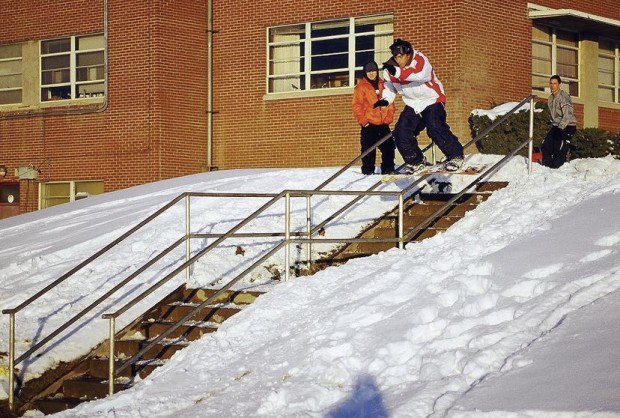
Quels sont tes vidéos et parts Kingpin préférées ? As-tu ressorti The Revival parce que tu la considère comme ta meilleure vidéo ? Vas-tu en ressortir d’autres en ligne d’autres vidéos du catalogue Kingpin ?
Il y a plusieurs vidéos Kingpin qui me sont chères. Sexual Chocolate a été la première qui m’a permis de voyager à l’étranger et de shooter en 16mm. J’ai bossé dessus avec Ken Block qui a fait la cover. Avant Sexual Chocolate, je filmais seulement en Super 8 et la seule façon de me le payer était de voler les bobines au supermarché de Boulder dans le Colorado.
[youtube id=”z9BycLokR48″ width=”620″ height=”360″]
Substance était un moment important pour moi. Le résultat était très cool alors que c’était sorti en milieu de saison et ça m’a permis de me faire remarquer par l’industrie. C’est là qu’Ingemar Backman a commencé. The Revival est aussi spécial car juste avant ce film j’avais arrêté les vidéos pendant 1 an pour me consacrer à Blunt Magazine. Dave England et moi avions déménagé les bureau de Blunt de Los Angeles à Portland et malheureusement Blunt a coulé 6 mois après. Je ne savais même pas si j’allais refaire des vidéos de snowboard à ce moment-là. Puis l’été après j’ai reçu un coup de fil de Sessions qui voulait que je m’occupe de leur film. J’ai laissé cogiter l’idée, puis appelé quelques autres marques et ils voulaient tous faire quelque chose, donc je me suis dit qu’il fallait refaire un film ! D’où le nom, The Revival car c’était le renouveau de Kingpin. Une autre de mes vidéos préférées est Destroyer. Nous avons dépensé pas mal d’argent en faisant toutes ces intros bien marrantes. Nous avons beaucoup filmé à New York juste pour profiter de la ville et se marrer entre potes avec l’argent des sponsors. Et au final la vidéo s’est super bien vendue donc ça valait le coup.
[vimeo id=”477331643″ width=”620″ height=”360″]
Parle nous de ton lien avec Blunt et Big Brother Magazine.
J’ai été très impliqué dans Blunt. Ken Block l’a lancé en 1993 et je l’ai rencontré juste après qu’il ait fini le premier numéro. Je lui ai dit que je voulais contribué au magazine et je lui ai proposé plein de contenu. Depuis j’ai travaillé sur chaque numéro de Blunt jusqu’à sa fin. Ken Block a fini par vendre Blunt à Big Brother / World Industries pour se concentrer sur DC Shoes et j’ai continué avec Blunt. Je suis devenu le photo editor et j’ai engagé Natas Kaupas comme directeur artistique, ce qui était et est toujours incroyable ! Le reste du staff était celui de Big Brother. J’ai aussi filmé pour la deuxième vidéo Big Brother ce qui m’a conduit à travailler sur le film Jackass 8 ans plus tard. Puis Rocco le boss de World Industries a vendu Blunt à Larry Flynt et j’étais toujours là. On a ensuite engagé Dave England que je connaissais depuis 1992 à Breckenridge comme éditeur.
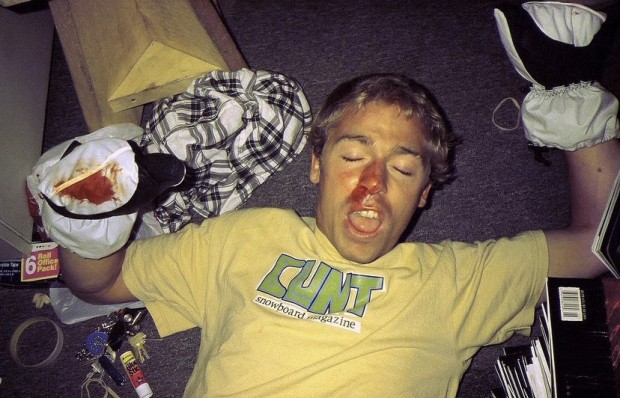
Regardes-tu toujours des vidéos de snowboard ? Pourrais-tu refaire un film de snowboard un jour où te consacres-tu uniquement à tes nouveaux projets ?
Je ne suis pas sûr de refaire un jour un film de snow. J’aime toujours rider et je suis encore très pote avec les riders de mes anciens films. J’adore revoir ces gars, surtout si c’est sur la neige. J’aimerais peut être aider une production existante et y apporter ma touche pour faire quelque chose de nouveau.
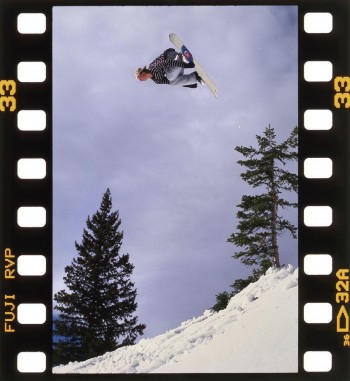
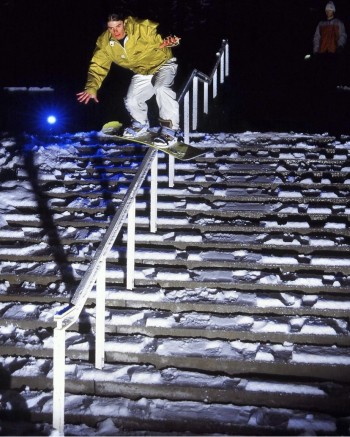
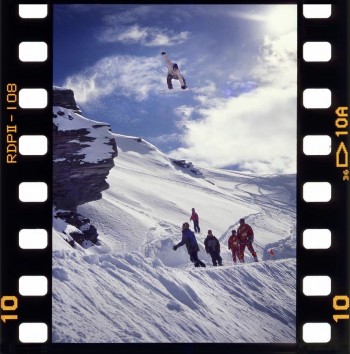
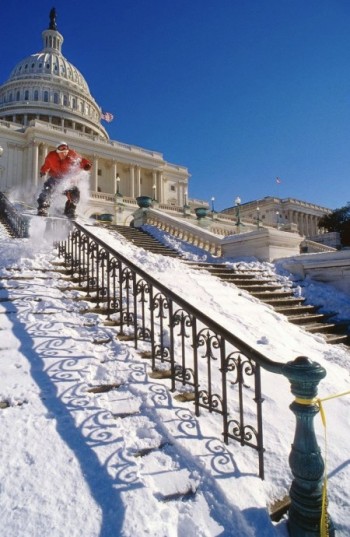
————
English version below
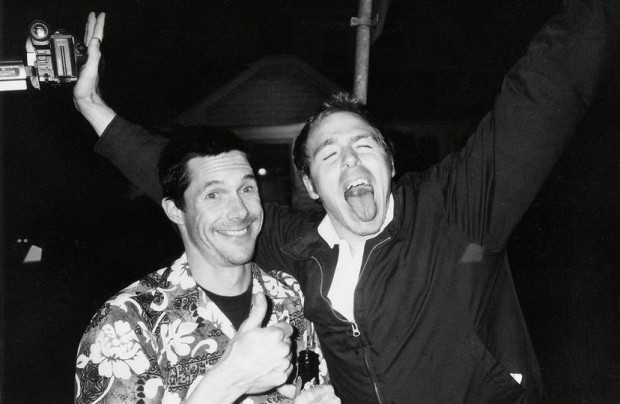
When did you started Kingpin Productions?
I started Kingpin Productions in 1992 when I was 22 and it came about pretty haphazardly. I’m from Washington DC, I grew up skateboarding there. I got a wooden Burton Backhill when I was about 14 and would ride it whenever it snowed. I’d ride it wearing hightop Vans and these punk camo pants of mine. They didn’t allow snowboarding at any resorts on the east coast until I was 18 and by that time I was in college. But once we could snowboard at a resort, we never thought about skiing again. After college I drove out west and moved in with a buddy of mine down in San Diego. I quickly fell into a crew of pool skaters there.My plan was to move to Colorado in December that year to become a pro snowboarder. But a few months before I was going to move to Colorado I broke my ankle skating a backyard pool and had to get 9 screws and a plate put in it. I moved out to Colorado anyway and ended moving in with Stevie Alters with a buddy of mine from DC. Stevie was only 18-19 then. Stevie was just on flow from a local Burton rep but he ripped so hard. His skill level was eons ahead of the old school pros at the time, definitely better than anyone I had seen. I quickly met a bunch of new Breckenridge transplants; Jason Gerardi aka J1 and then J2. Nate Cole, Chris and Todd Fransen, Dave England, Cody Dresser… I soon realized that the screws in my ankle made it way to painful to ride aggressively, so the pro thing was out the door. Plus, I knew in my heart that these new friends were way better than me.
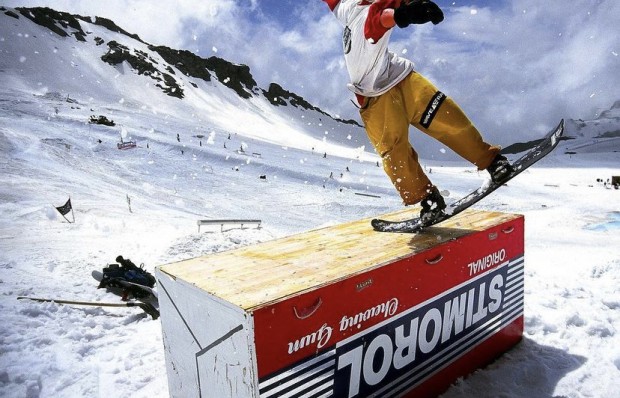
How was it back then to shoot a snowboard movie?
I remember seeing a trailer for a new snowboard film and I thought it looked so corny, like a crappy ski film and I said, I can make a better movie than that. So that’s what I decided to do. I had no money, no plan but I got a video camera and started filming my friends. I took the name Kingpin from the kingpin bolt on a skate truck. Back then snowboarding was so new and fresh. Everyone was trying new shit because everything was new. People were cutting, modifying their boards, bindings, being inventive. These new riders were way ahead of the industry in terms of design and style, they changed not only the way snowboarders ride but the way snowboards were shaped and made. I can’t say enough about how people like Roan Rogers, Nate Cole, Steve Alters, Dale Rehberg and those guys changed snowboarding.
[youtube id=”jGkV_oEZV9U” width=”620″ height=”360″]
Kingpin seemed to be the production who gave their first part to future superstars like JP Walker, Jeremy Jones, Scotty Wittlake, Iikka Backstrom, Gigi Ruf… How did you discovered these new talents?
I think the reason that we were able to discover so many great talents is that we were willing to film them. The other companies at the time; Fall Line, Mack Dawg, Standard were mostly filming established pros and I was filming the new kids. I always preferred to film riders that I liked personal and I thought were entertaining. I think that is one thing that separated Kingpin from a lot of the other film companies; that our crew were all good friends. There was never any tension or oneupmanship in our group. Stevie Alters, J2, Ninja Jay Isaacs, Ingemar Backman, Mikey Leblanc, Cody Dresser. Kurt and Jeff Wastell, JP Walker, Gigi Ruf, Scotty Wittlake, Chad Otterstrom, Ali Goulet, DCP and just some of the pros we helped get started.
Was there some rivalty between you and Mack Dawg to have the best riders? From an outside point of view, Kingpin seemed to be the M3 movies and Mack Dawg the Forum movies and these were the 2 coolest companies at this time.
I don’t think there was any real rivalry between Mack Dawg and Kingpin. We were definitely less serious than Mack Dawg. Sure, we wanted good riding in our films but I was more concerned with having fun and being unique. I’ve always been more of a fan of skaters with personalty and character than technical prowess; skaters like Neil Blender and Mark Gonzales were idols of mine as a kid. There’s a reason J2 was in every single one of my films, it’s not because he was the best rider (he wasn’t) but he was my favorite rider to be around, on and off the snow. I could care less that he wasn’t going to do a 900, he was in our crew and it made our films and filming better.
What are your personal favorite Kingpin’s movies and favorite parts? Did you re released The Revival because you consider it like your masterpiece? Are you going to release online more movies from the Kingpin’s catalog?
There are a few Kingpin films that are special to me. Sexual Chocolate was the first film where I got to travel overseas and shot 16mm film and I got to work with Ken Block (he did the box layout). Before Sexual Chocolate I only shot Super 8 film and the only way I could afford it is by stealing it from the King Supers grocery store in Boulder Co. Substance was a big break out film for me. It turned out great (it was a mid season release) and made even the industry elites take notice. Ingemar Backman’s breakout part was in Substance. The Revival is also special. Right before that film, I had taken a year off from making snowboard films to focus on Blunt Magazine. Dave England and I moved the Blunt offices from LA to Portland Oregon that year and ironically Blunt magazine went belly up about 6 months later. I didn’t even know if I was going to make another snowboard film at that time. Then that summer I got a call from Sessions to see if I’d like to make a Sessions team film. I thought about it, then called a few other companies and they all wanted to do something, so I said, fuck it, let’s make a film! Hence the name, The Revival, Kingpin’s Revival. My other big favorite would have to be Destroyer. We had so much fun making that film. I had very little money with the Revival but after that films success I was able to increase our budget by 9 times for Destroyer. We spent the money doing all these ridiculous bits and sketches. We filmed a bunch of stuff in NYC for no other reason than to go to NYC and have fun with my friends on our the sponsors dime. Destroyer also crushed sales wise, which was nice.
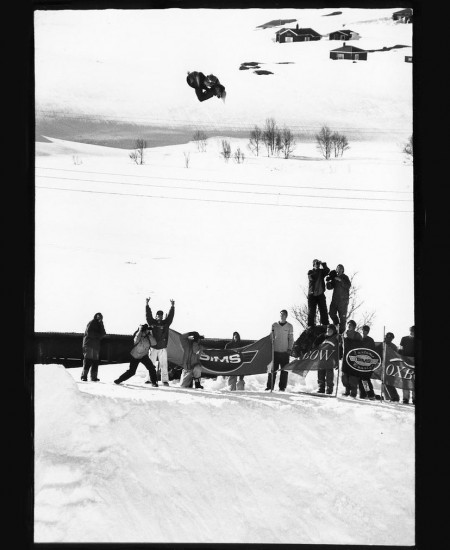
You seemed to be linked with Blunt magazine. Were you part of it? Was Blunt and Big Brother the roots of Jackass? How were you involved in Jackass shows and movies?
And yea I was a big part of Blunt Mag. Ken Block started it around 1993 and I met him right after he had finished the first issue. I told him that I needed to be a part of the mag and started submitting as much stuff as possible to him. After that I worked on every issue of Blunt until it’s end. Ken Block ended up selling Blunt to Big Brother/World Industries so he could focus on DC Shoes and I went with Blunt. I became the photo editor and we hired Natas Kaupas as our Art Director, which was and still is incredible! The rest of our staff was the Big Brother staff. I also shot some stuff for the Big Brother video Number Two when I was there, which led to me working on the Jackass films about 8 years later. Rocco (World Industries) then sold Blunt to LFP and I went there. At that point we hired Dave England as editor. I had known Dave before that since 1992 when we met in Breckenridge.
[youtube id=”kaujTOhvgcA” width=”620″ height=”360″]
Do you still watch snowboard movies? Could you make a new movie someday or are you fully devoted to shoot music video, comedy and commercials now?
I’m not sure if I’d make another snowboard film again. I still love to ride and I’m still good buds with most of the riders in my film. It’s always such a pleasure to connect with any of those guys, especially on the hill. I would love to help out an existing company, try to add to flair, do something new.
